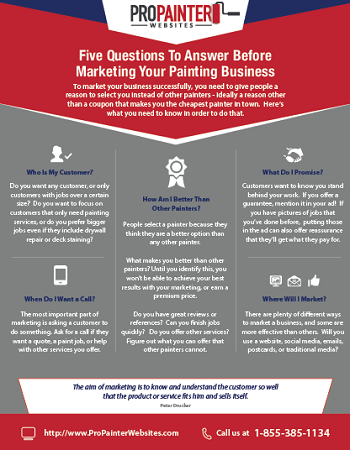Explore The Function Of Seasonal Factors In The Success Of Industrial Exterior Painting And Reveal The Most Effective Times To Protect Long Lasting Outcomes For Your Task
Explore The Function Of Seasonal Factors In The Success Of Industrial Exterior Painting And Reveal The Most Effective Times To Protect Long Lasting Outcomes For Your Task
Blog Article
Short Article By-Carlson Bagger
When you're preparing a commercial outside paint task, seasonal elements can make or damage your outcomes. You'll want to take into consideration just how temperature and moisture effect paint application and drying out times. Choosing the appropriate season can ensure your paint adheres appropriately and lasts much longer. But which seasons are absolutely the best for this kind of job? Let's discover the crucial elements that can affect your task's success.
The Influence of Temperature Level on Paint Application
When you're planning a business external painting project, the temperature level can dramatically affect just how well the paint adheres and dries out.
Preferably, you intend to repaint when temperatures vary between 50 ° F and 85 ° F. If it's too cold, the paint may not cure correctly, resulting in problems like peeling off or cracking.
On the other hand, if it's too hot, the paint can dry out also quickly, stopping appropriate adhesion and resulting in an irregular finish.
You should likewise consider the time of day; early morning or late afternoon supplies cooler temperature levels, which can be a lot more positive.
Always inspect the maker's referrals for the certain paint you're utilizing, as they often give advice on the ideal temperature level array for optimal results.
Humidity and Its Effect on Drying Times
Temperature isn't the only environmental element that influences your industrial external paint project; humidity plays a considerable function also. straightline can decrease drying out times substantially, affecting the overall quality of your paint task.
When the air is saturated with dampness, the paint takes longer to cure, which can bring about issues like poor adhesion and a greater danger of mold development. If you're repainting on a specifically damp day, be planned for prolonged delay times between layers.
It's essential to check regional weather and plan appropriately. Ideally, go for humidity degrees in between 40% and 70% for optimum drying.
Keeping these factors in mind guarantees your job stays on track and delivers a long lasting coating.
Best Seasons for Commercial Exterior Painting Projects
What's the best season for your commercial exterior paint jobs?
Springtime and very early fall are usually your best choices. Throughout these seasons, temperature levels are light, and humidity degrees are usually lower, creating perfect problems for paint application and drying out.
Prevent summertime's intense heat, which can cause paint to dry too quickly, resulting in inadequate attachment and surface. Similarly, winter months's cool temperatures can impede correct drying out and healing, running the risk of the longevity of your paint task.
Aim for days with temperature levels in between 50 ° F and 85 ° F for optimum outcomes. Keep in mind to check the regional weather forecast for rainfall, as damp conditions can wreck your job.
Read the Full Posting around these elements guarantees your paint task runs efficiently and lasts much longer.
Final thought
In conclusion, preparing your business external painting projects around seasonal considerations can make a significant difference in the result. By organizing job during the ideal temperatures and moisture degrees, you'll make certain far better bond and drying times. Keep in mind to keep an eye on local weather forecasts and select the right time of year-- spring and very early autumn are your best choices. Taking these actions will certainly assist you attain a long lasting and expert surface that lasts.
